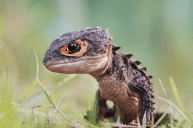Exciting things are happening at the Fort Worth Zoo! They gained another addition to a critically endangered reptile. Recently, this zoo gained not one, but two gharial crocodile hatchlings. This is exciting because there are now two more in the endangered reptile population, and this was the zoo's first-ever repeated gharial breeding process. Watching these baby crocodiles hatch was a highlight for the zoo.
Baby Crocodiles Hatch, Two More For The Gharial Crocodiles

Screenshot from Facebook
The Fort Worth Zoo witnessed these two baby crocodiles hatching on June 16 and June 22 this year. USA TODAY claims it was the "product of more than a decade of dedicated effort to successfully reproduce this species, grow the population, and diversify the gene pool." That excitement is intensified when you learn that they are the only North American institute to successfully hatch multiple of the crocodile species' offspring, as stated in a press release.
In a Facebook post, the zoo shared information where visitors could see these adorable baby crocodiles. The post read:
"For now, the hatchlings will remain behind the scenes at the Zoo for close monitoring of their growth and development. However, we are proud to host the first-ever viewing of the 2023 hatchlings on Saturday, July 27, and Sunday, July 28, inside the Museum of Living Art (MOLA) at the Discovery Hub from 10 a.m. to 2 p.m. Come see this incredible species up close!"
The Gharial Crocodile

Screenshot from Facebook
The gharial crocodile is easily distinguished from other crocodiles because of its long nose. Unlike a typical crocodile's wide jaws, the gharial crocodile's snout is long and slender. However, it is still full of those razor-sharp teeth! The Smithsonian National Zoo also shares how these crocodiles are vastly more successful in the water than on land. They explain that this species has very weak leg muscles, and "when they do move across land, gharials push their bodies forward across the ground, a motion known as belly-sliding."
However, they don't see their weak leg muscles as a sign of overall weakness. While the baby crocodiles that hatched are currently only about 12 inches long, they will get much bigger. This species is one of the largest crocodile species. Males can reach up to 20 feet long, and females can reach up to 15 feet long.




